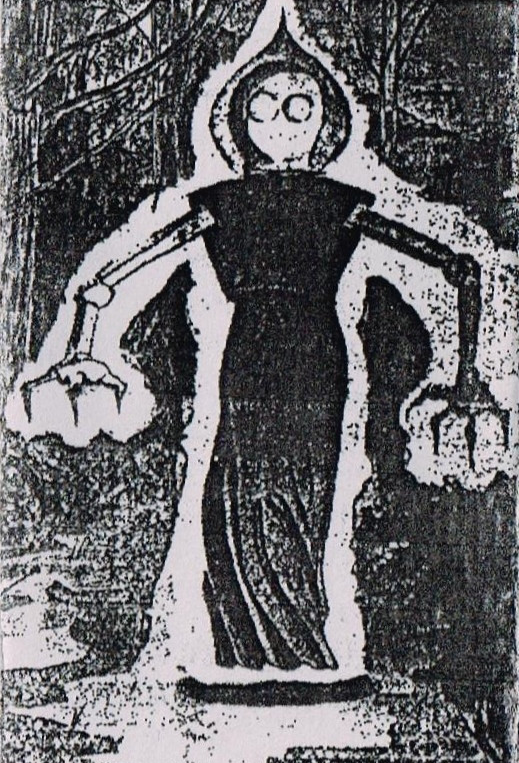
AHULABRUM
08/15/20 | J.R.
As many did in the late 2000s/early 2010s, I got all my new underground music from Aesop Dekker's Cosmic Hearse blog. The haven for the outsider, unique, and bizarre, Cosmic Hearse expanded my mind more than four years of music school ever did, showing me music so unique, so boundary-breaking that it redefined what I felt music actually was. One of these fine examples was the mysterious West Virginia black metal project Ahulabrum, whose three demos meditated on the paranormal. Concentrating on cryptids and UFO sightings—“entities,” as the artist describes—Ahulabrum's shambling, outsider black metal felt wrong, like you weren’t supposed to hear it. Like the blacked-out text of classified documents, Ahulabrum offered up just enough to create a mystery, but little else. Around the end of Ahulabrum, a split began to spread through the underground—California's Godemiché and the mysterious “The Werewolves of Venice,” presumed to be a side project of Velvet Cacoon’s Josh Lobb and Godemiché’s (later proven to be nonexistent) Odette. Ahulabrum would claim ownership of these songs after a tape pressing was announced on the now-defunct Full Moon Productions forum. With little correspondence with the outside world and tapes limited to around ten copies each, Ahulabrum’s brief existence between 2005 and 2006 offered just enough to create a mythos, an enigma grander than the band itself. Now, fifteen years later, interest in Ahulabrum is revitalized. Pro-tape represses of the entire tape catalog will be available through Atrocity Altar and a vinyl compendium will soon be pressed through Ixiol Productions.
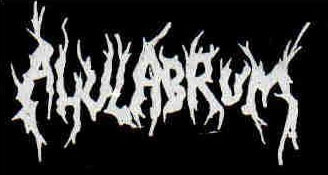
What first ignited your fascination with extraterrestrials and UFO sightings?
I grew up in a small town in West Virginia. You had to drive 45 minutes just to go to the movies, so when I wasn’t running around the wooded hillsides that cradled our trailer, I had my nose in a book. My mom was a librarian at the county library, and we had a ton of books at home, too, so I was constantly exploring the world outside of my small Appalachian town. Some of these books, such as Mysteries of the Unexplained were like encyclopedias of strange phenomena that hooked my interest immediately. I devoured everything I could find on such matters. I was (and still am) deeply interested in not only the UAP phenomenon, but also bigfoot and other cryptids, ghosts, etc.
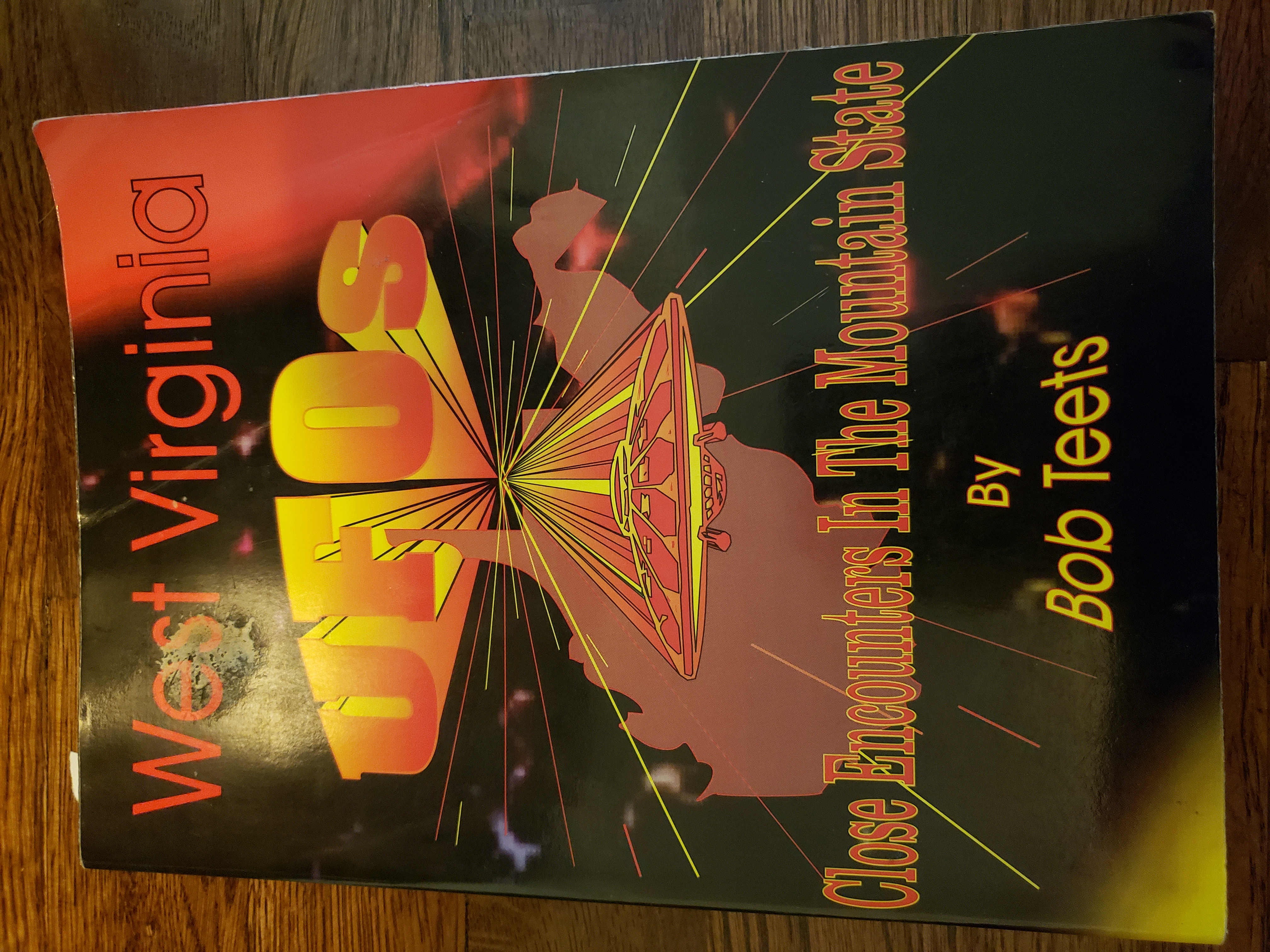
One book, West Virginia UFOs, was very influential in guiding me down this path. West Virginia has quite a rich history of UAP events. These things were happening to people around me as well. I’d hear about strange lights in the sky that a family friend claimed he could communicate with, stuff like that. When I read The Mothman Prophecies it was like a revelation. There is something weird that we’re dealing with here. Usually, as one gathers more information, more data on a subject, one arrives at a greater understanding of that subject. That hasn’t been the case with UAPs, however. The more you dig into them, the weirder it becomes.
What led you to decide to meld this passion for the unexplained with black metal?
That’s a question I don’t really have an answer for. I’ve experienced some strange things in my life and Ahulabrum just feels like an extension of some of them. When I was very young, I created this device that I thought would allow me to communicate with alien beings that I was sure were interacting with me. It was just a couple of radios deconstructed and put back together in a way that allowed more than one station to be played at a time. I was quite young, as I said, and thought that by tuning certain frequencies together, I was hearing communications from these beings. I was wrong, of course. But I recorded a lot of these “communications” which I eventually used in many of the songs.
I got into extreme metal around 1988, which led me to a lot of weird experiences as well. Some of these are detailed in the short story “Seventh Blasphemy 1990” which was written by a childhood friend and is included in a collection of his with weird fiction writer Jordan Krall. The story is obviously fiction, but a lot of the stuff he describes is shit that we actually did, like the boom box configuration ritual that allowed us to hear demons.
Ahulabrum was, I suppose, the way that these entities, whatever they are, chose to communicate at that time.
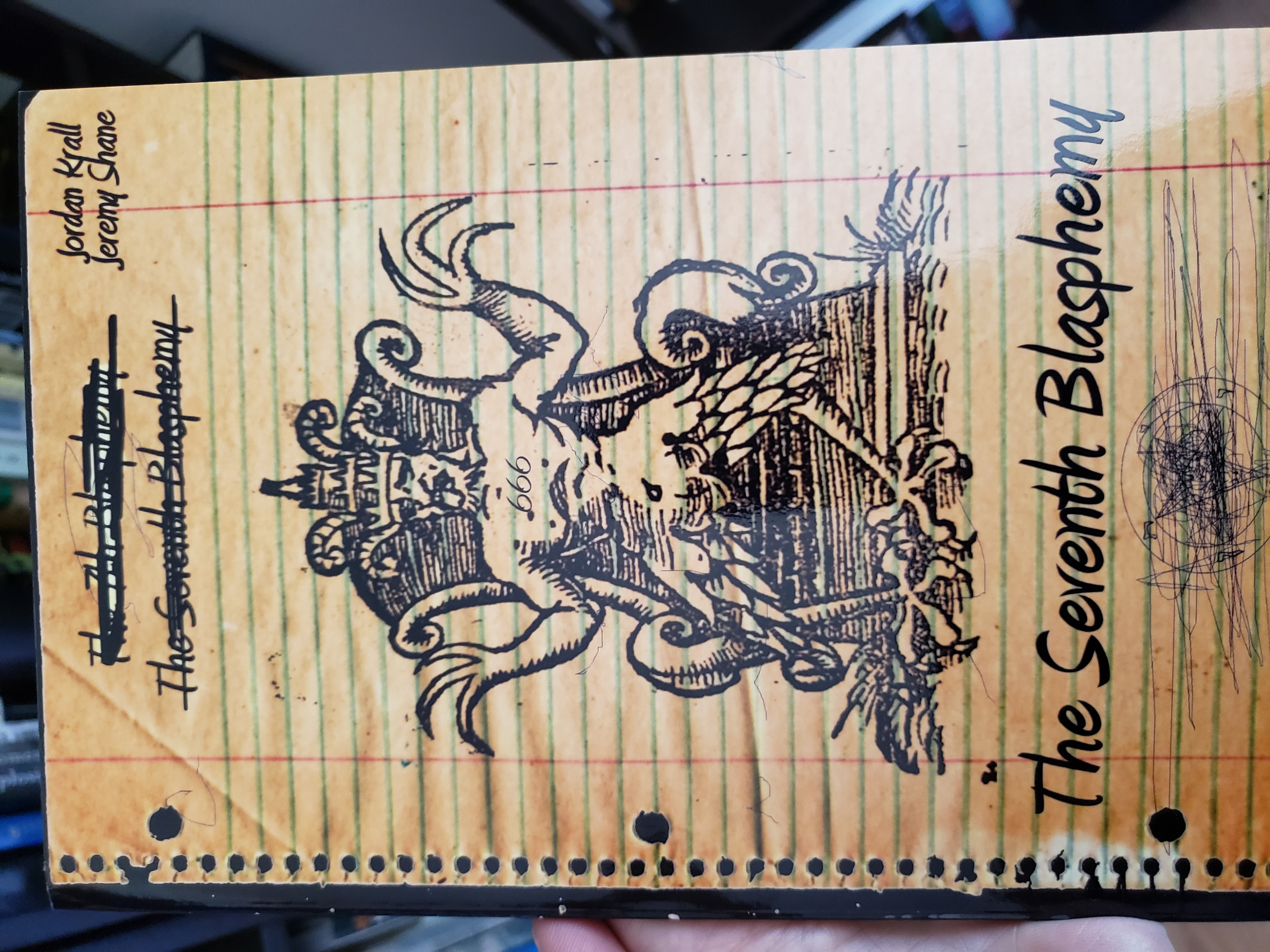
Ahulabrum was, but there has been a resurgence in fandom lately, resulting in reissues on Atrocity Altar and a yet-to-be-named label. What do you attribute this to?
I’ve no idea, but I think it’s an incredibly strange bit of synchronicity that interest in Ahulabrum has come at a time that the government of the so-called United States has confirmed the existence of aerial phenomena for which they have no explanation and even the admission that there have been craft recovered that they claim originated from somewhere other than Earth. Such synchronicity is the norm rather than the exception when studying UFOs, as one finds. Whatever the interest, I was first approached by Ixiol Productions who had done a bit of internet sleuthing to get in contact. They have put out some good stuff such as Ashdautas and will be handling a vinyl compilation of demos and a split EP with Vor Dem that never came to fruition. There are plans for further releases. Some time later, in further synchronicity, Atrocity Altar contacted me after doing their own sleuthing. They're reissuing the three demos on tape, with plans for further releases as well. Both of these outreaches were within a few months, after about 15 years of inactivity.
15 years ago, you put out three tapes in quick succession: Magonia, The Phantom of Flatwoods, and The Transitivity of Strangeness. I was wondering if you could give us a rundown of each tape and what they represent in the Ahulabrum discography.
The title Magonia is taken from a book by French UFO researcher Jacques Vallee, Passport To Magonia, which is essential reading for anyone looking to expand their idea of UFOs beyond the “visitor from outer space” hypothesis. Vallee makes clear that whatever this phenomenon is, it’s been with humanity for as long as history records. People’s experiences with UFOs beginning in the late 19th century bear a startling similarity to experiences people have had with beings known as the Good People, the fae, angels, demons, djinn, etc. People were seeing and interacting with faeries, angels, and the like before the modern era, where these things took on a guise of technology. Airships were observed in the late 1880s and '90s before such craft were common. Later, they appeared as flying saucers, triangles, cigar-shaped craft, etc. Magonia was my attempt to relay this idea in the medium that I was able to do so, despite not knowing how to play guitar or drums. Each track takes as its inspiration a famous encounter with these entities.
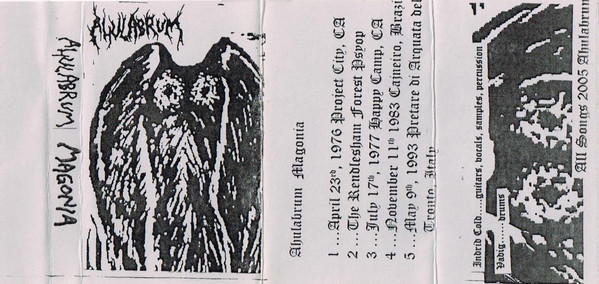
The Transitivity of Strangeness came next and continued the idea of examining UFO incidents, beginning with “September 12th, 1952, Flatwoods, WV,” which is about an encounter with what has come to be known as the Flatwoods Monster. A witness’ recollection of this being (or machine) is seen on the cover of the next demo The Phantom of Flatwoods. It’s truly one of the strangest encounters of mid-twentieth century UFO lore. The rest of the demo follows suit. I also incorporated a lot more of the tapes I had made as a child with the deconstructed radio device as a background while recording.
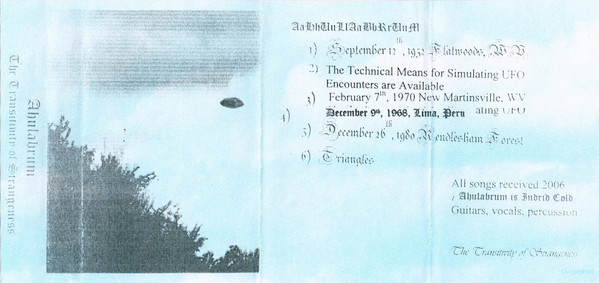
The Phantom of Flatwoods can be considered a concept album as it is wholly concerned with the incident at Flatwoods. I actually made a field trip to Flatwoods, WV and did a lot of field recordings at the hill where this event happened. While I didn’t witness or record anything paranormal, the recordings have a strange atmosphere of bucolic hauntology that works well when exploring an incident that happened so long ago. I incorporated these into the tracks on this tape along with certain electrical effects that I was able to achieve using feedback, the proximity of some very old stereo equipment, and the acoustics of the recording space.
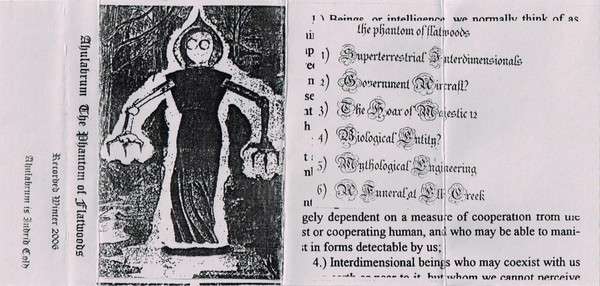
There were more recordings which made their way to the internet, as well, masquerading under the name “Werewolves of Venice” as a digital bootleg “split” with Godemiché. This was rumored to be a side project of Josh from Velvet Cacoon and the nonexistent "Odette" from Godemiché before you publicly took credit for the mp3s. Though Godemiché offered their side of the story in the liner notes of a recent Bandcamp release, I was curious as to what your side and experience was. What happened?
I only became aware of the use of our tracks after seeing it on the now-defunct Full Moon Productions forum. I am not aware how the whole thing went down, but it does seem as if Godemiché were genuinely unaware that they were Ahulabrum tracks. Who was behind this, I don’t know. It could have been the folks behind Velvet Cacoon who were trolling a band who were openly aping their style, but I do not know. I ordered a copy of the tape when I heard about it (it was released on tape by Eradication Process Productions). I never communicated with either Godemiche or Velvet Cacoon regarding the release.
Between the aforementioned bootleg and your own anonymity and eventual abandonment of the project, Ahulabrum has a bit of a mythos surrounding it. What was it like to return to Ahulabrum with this sort of underground notoriety?
A bit strange as these demos were done fifteen years ago. There wasn’t much interest at the time. I’m not sure how many of each demo I made, but it was less than ten each. I look at the prices these tapes are selling for now and it blows my mind that people are interested in what I consider noise or at least outsider black metal.
Was it your intent to create something “outsider,” then?
No, it wasn’t my intent. I've only ever done vocals in every project I’d been involved with prior to that and have no ability to play any instrument. Likewise, although I’ve been listening to extreme metal since the ‘80s, I'm not part of any “scene.” These things qualify as outsider, in my estimation. My intent was only to do what I wanted.
What did you want to achieve with Ahulabrum?
Ideally, I wanted to expand the listeners’ consciousness. These entities, whatever they are, have been interacting with humanity for as long as we’ve been telling one another stories. They’ve communicated with me and I feel that they are using me, through Ahulabrum, to communicate. Once everything is set up, background recordings playing, and a certain mindset achieved, I would go into a near trance while recording. The songs were later edited and combined with the samples to create the final product.
Along with being an astronomical and cryptic entity, it seems like Ahulabrum was metaphysical to you. Am I far off?
I don’t know what these beings are, or even if they exist beyond the metaphysical at all. Sure, there are physical artifacts such as photos, disturbed ground with inexplicable radiation, the aforementioned recovered crafts which have just been admitted to by the US government, etc., but I think it’s clear that these things don’t fit into any of our concepts of extraterrestrial intelligences. Perhaps they’re some sort of intelligence that comes from the Earth in some way that we can’t conceive of. John Keel did a good job of pointing out that we’re only able to perceive a very limited range of information that surrounds us at all times. His book The Eighth Tower deals with this in some detail.
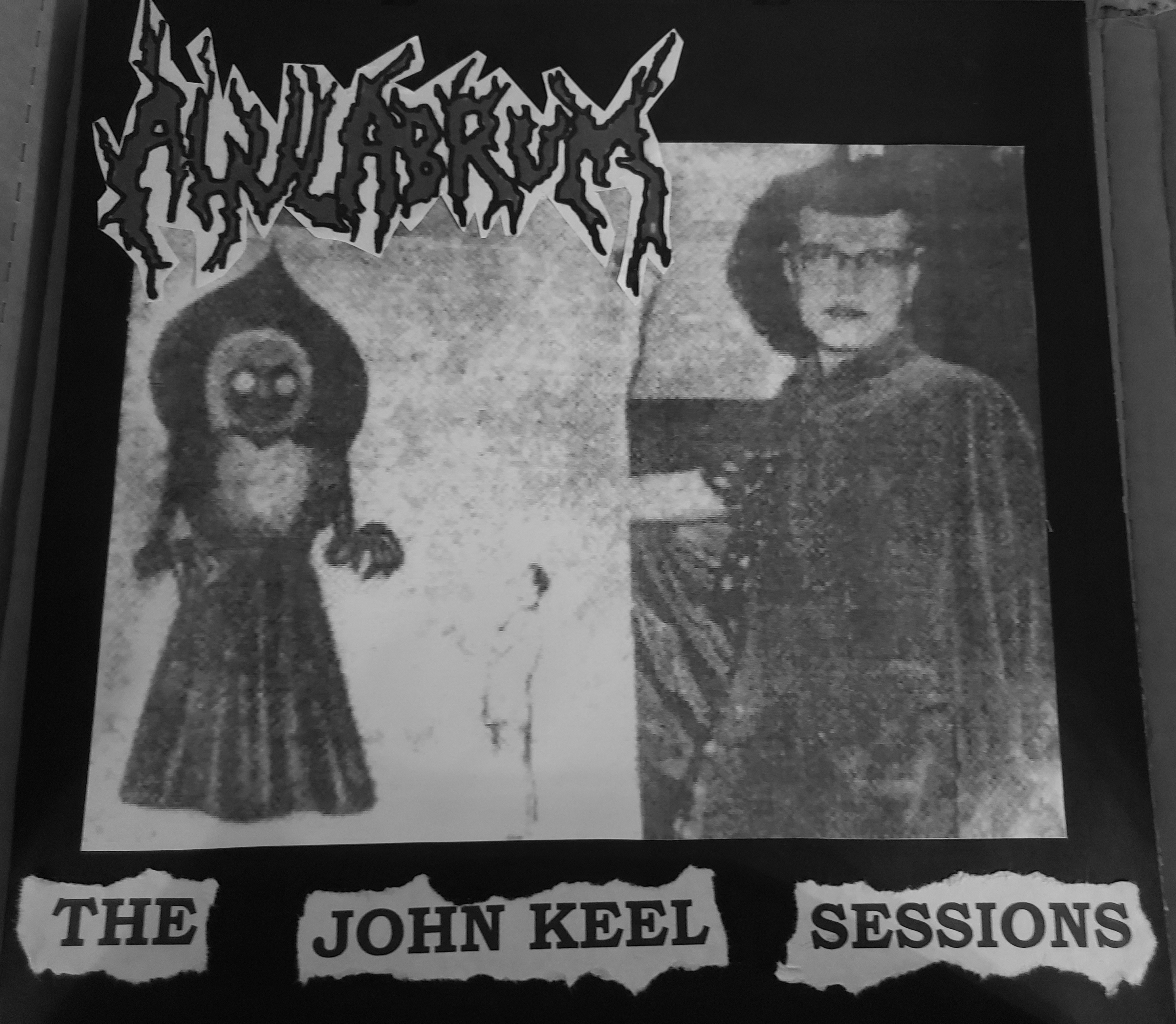
Have you been artistically active following the Ahulabrum period?
I did another demo of a project along the same lines, but focused exclusively on death called Befouled By Flies. There was also some dark ambient stuff done which no one has heard. Both of these projects will likely see the light of day sometime as well as the final Ahulabrum tracks which haven’t been released. Musically, that's all I’ve done since.
What kept you from creating more music?
Whatever urged me to create Ahulabrum was finished. It felt more like a vehicle that I wasn’t driving to begin with, so it really wasn’t up to me.
Do you have any final thoughts you would like to add?
I think I’ve made clear that we don’t know what these entities are, let alone what they want. We simply do not know if they are benevolent, malicious, or what. We can assume they are not indifferent to us because they've always been with us in one manner or another. Folklore seems to be the best way to approach this phenomenon, as does demonology and certain goetic practices. The more we learn, the less sense it makes, but I think it’s very important to try and understand.



